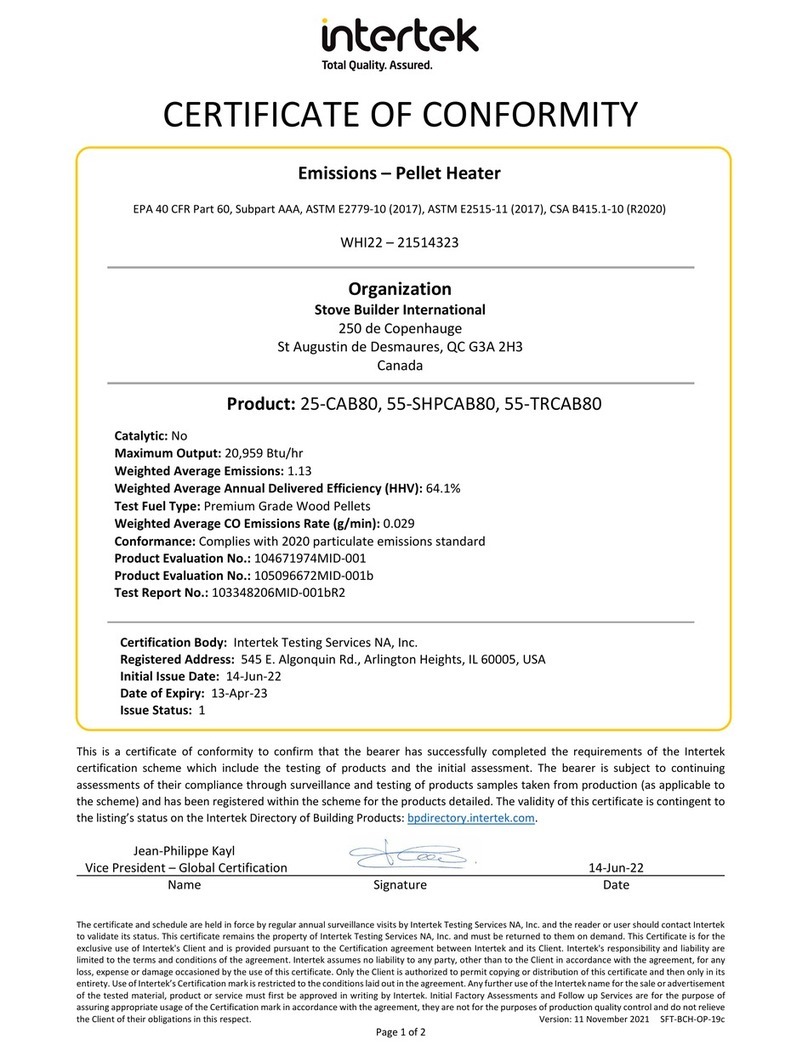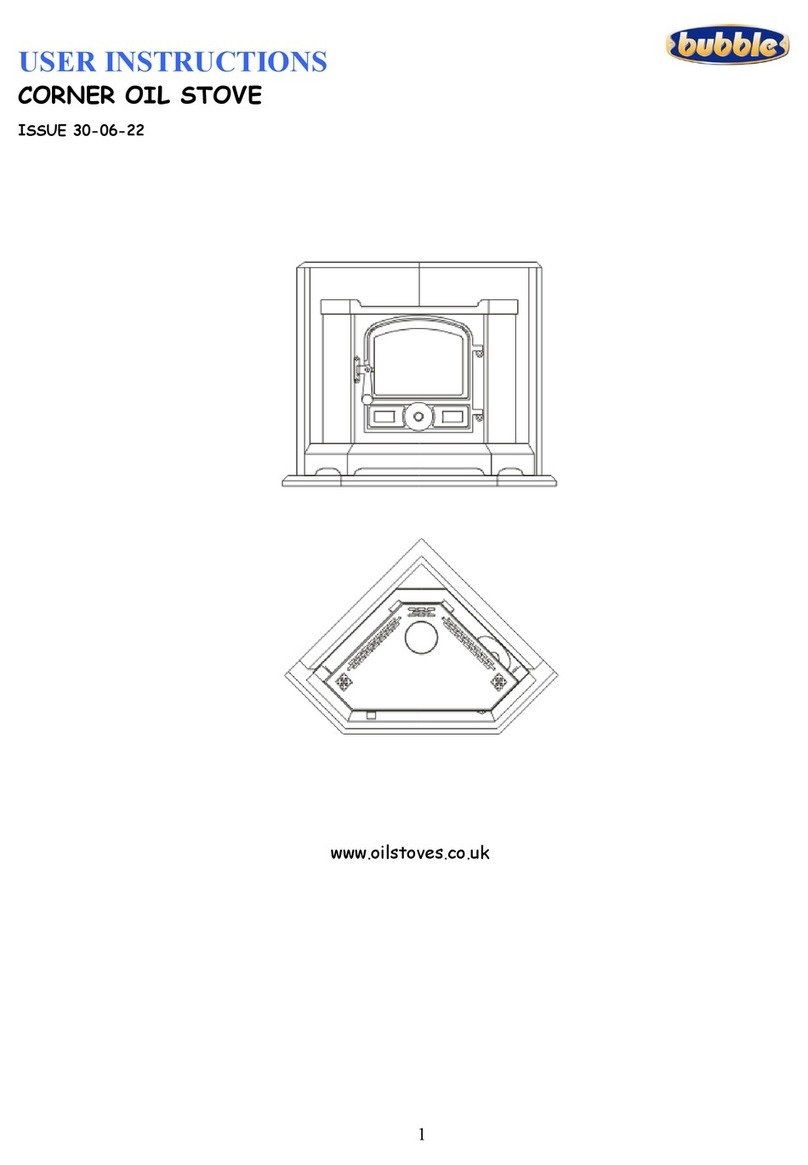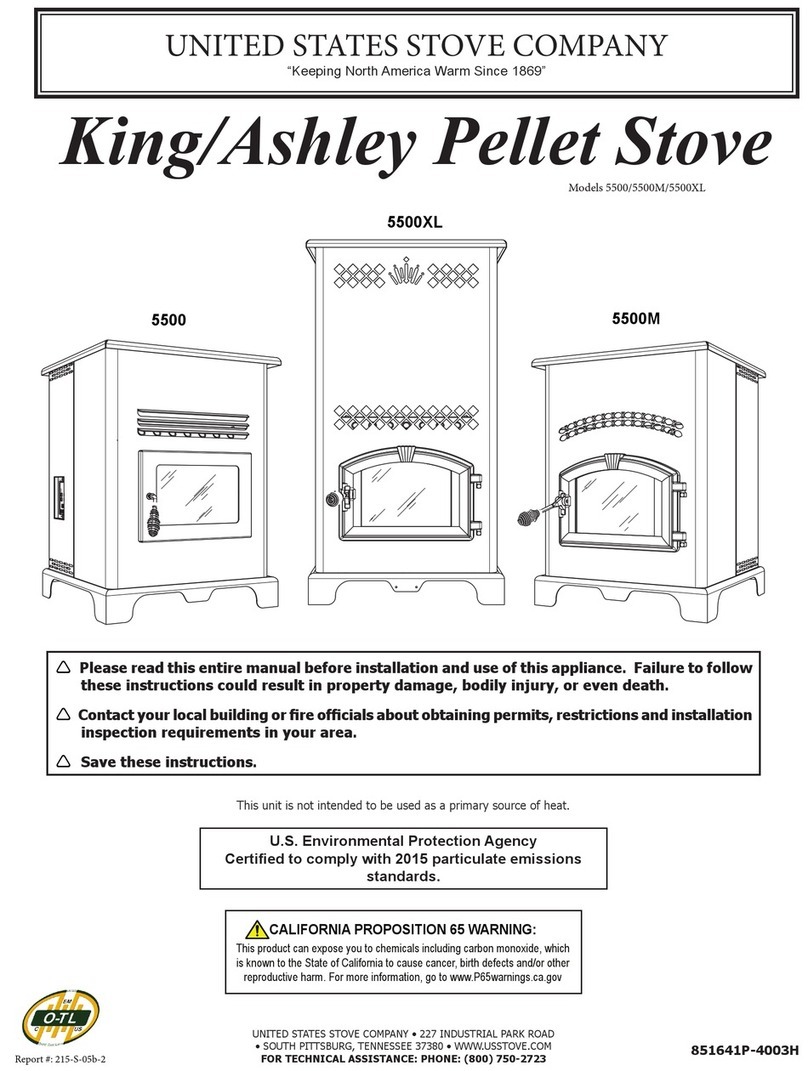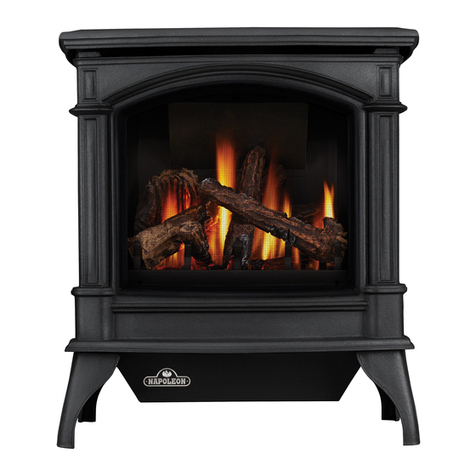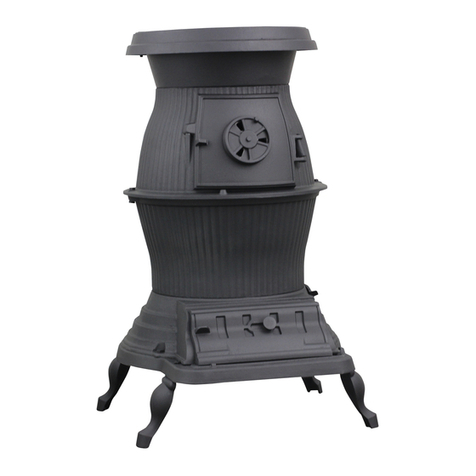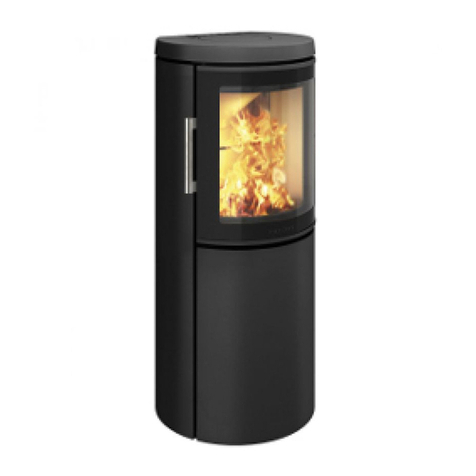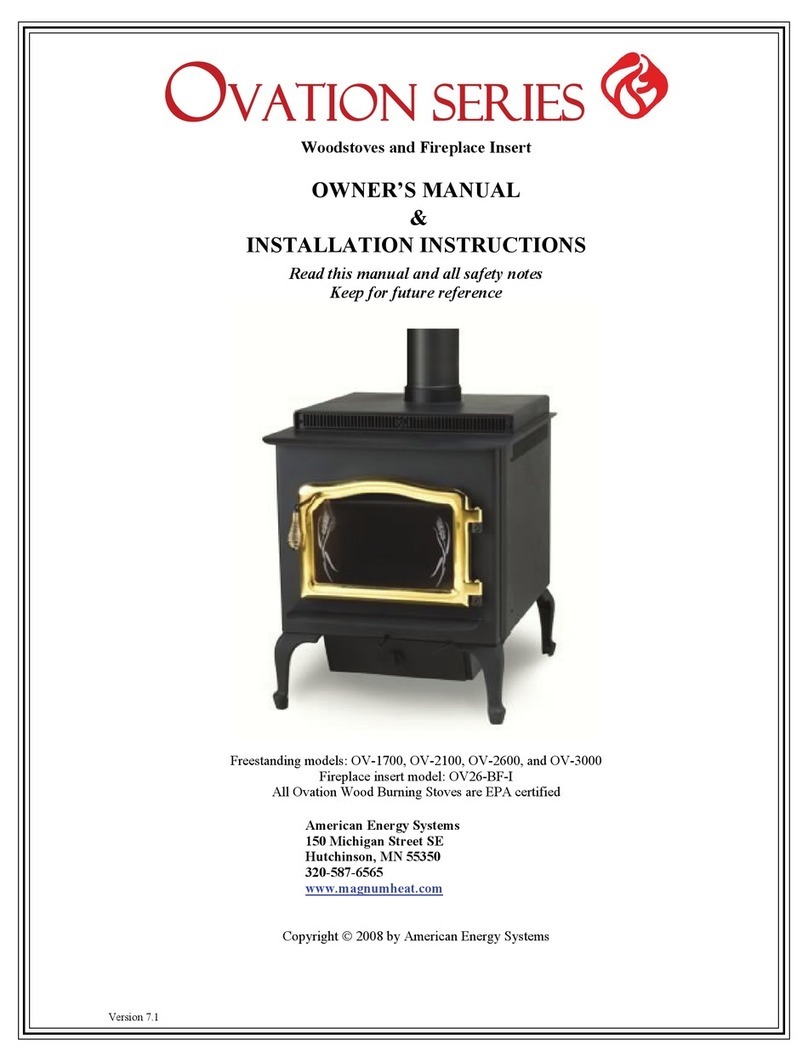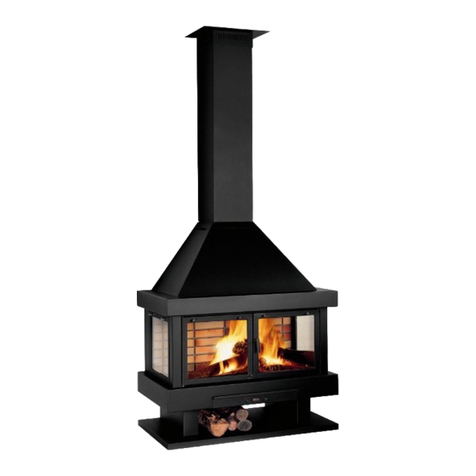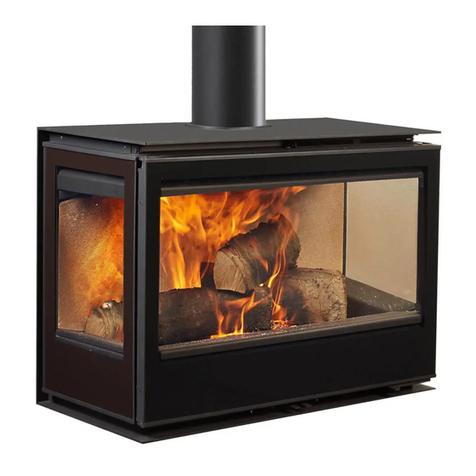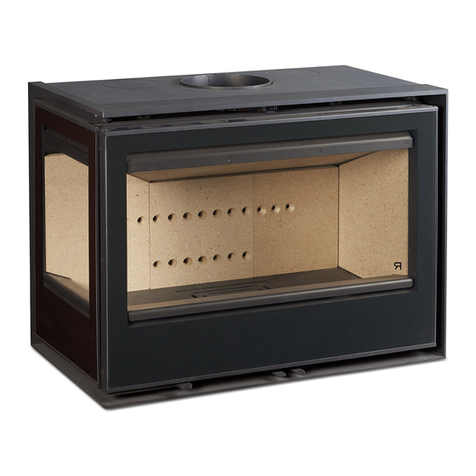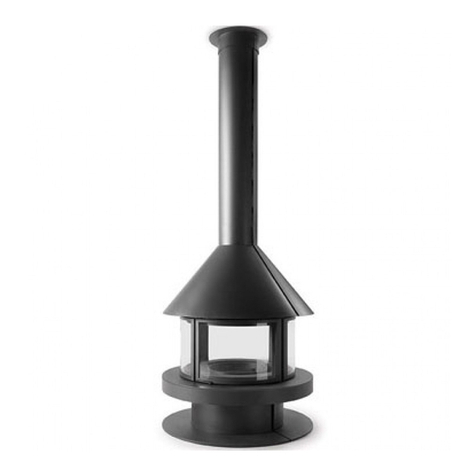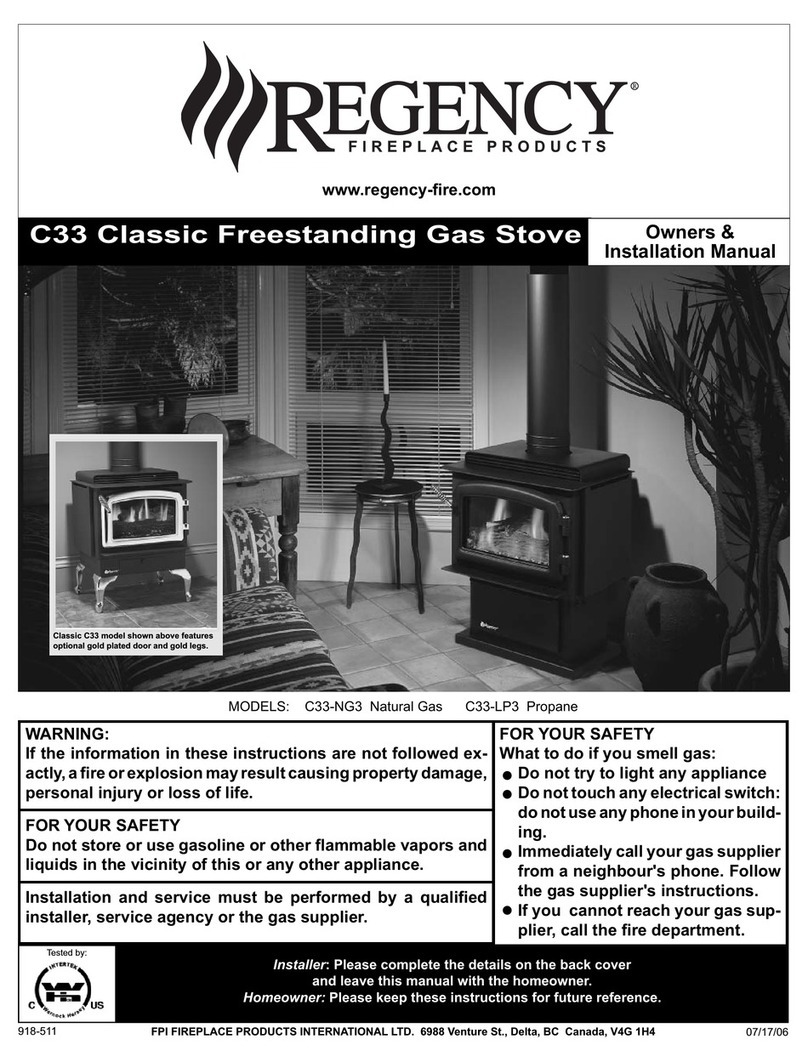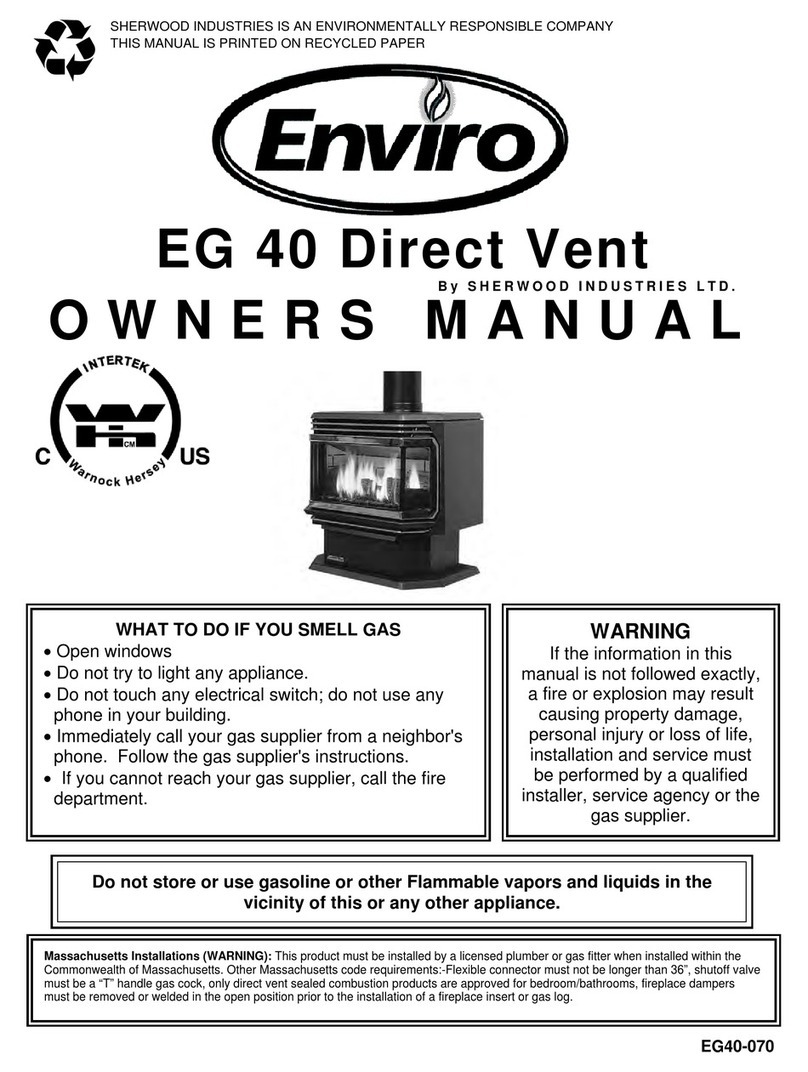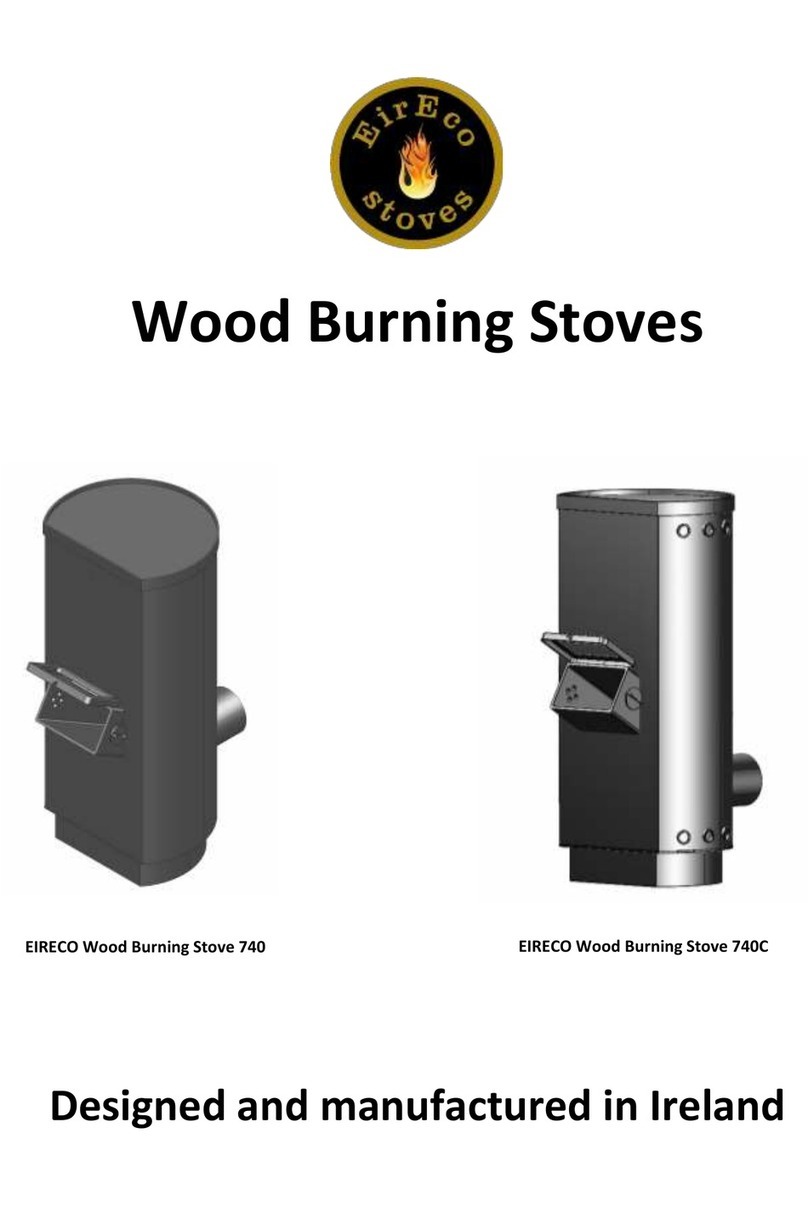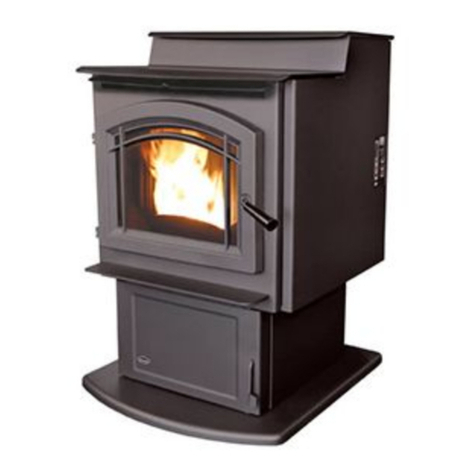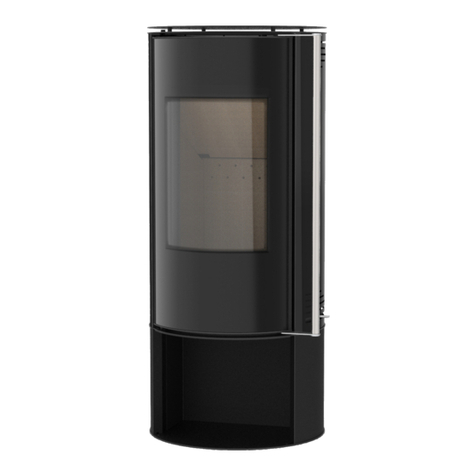Pag. 13
ALL LOCAL REGULATIONS, INCLUDING THE ONES ACCORDING TO THE NATIONAL
OREUROPEAN NORMS MUST BE ACCOMPLISHED WHEN PROCEEDING TO INSTALL THE
FIREPLACE.
1.1. Mono-block fire. “Vermiculite” home plate at the bottom, sides and baffle plate, fire
grate, ash pan and ventilation set incorporated.
The fireplace comes ready to install.
Provision should be made from inside an output for the electric cable.
All the inner can be removed if desired, for easier transportation and installation.
1.2. Floor. This fireplace must be assembled on floors, which provide an adequate bearing capacity.
If the resistance is not enough, a panel of balance would be required to distribute the whole weight of
the fireplace.
1.3. Smokestack. A smoke connector from the adapter is needed to the smoke outlet.
This outlet must be in good conditions and certified by a professional.
It can also be possible to lengthen the pipe to the outdoors providing, in any case, the exact diameter
for the fireplace.
The installation procedures must be done under the regulations.
It is not possible to use this pipefor any other purpose. This smokestack must be shared with other
devices (You can see I: Technical characteristics).
1.4. Insulating procedures.
1.4.1. Apparatus insulation. The fireplace must be insulated with insulation panels (Type A-
1,EN13501-1) on its sides, back and upper part.
1.4.2 Fireplace room insulation. It is also convenient to use insulation panels on the inner walls of the
fireplace (Type A-1, EN13501-1).
1.5. Safety distances.
1.5.1. Inner fireplace room safety distances. You must be respected the values described in
I:Technical characteristics.
1.5.2. Outer fireplace safety distances. Anything fragile or flammable (textile, electronics, wood,
paper wall, glass, chalk…) should be separated of the appliance and respected the safety distances
described in I: Technical characteristics.
We must take special care in those fireplaces with wooden shelves or similar: we must prevent and
avoid the possibility of hot air that expels the device falls directly on the wood, in these cases,
flammable items should be properly insulated.
1.6. Ventilation.
1.6.1. Fireplace room ventilation. The appliance must be provided with an air outlet or inlet diffusers
for sufficient air flow as described in I: Technical characteristics
For this ventilation exist two options:
-WITHOUT air outlet pipes connection (C-1). Only done the flue connection. NO used the upper
air outlet, the fireplace room air is output from the front of it. You must done an input and output in
fireplace room of the appliance.
-WITH air outlet pipes connection (C-2). If you want you can drive the air from fireplace room to
the top or adjoining room, by lifting the lids (D-1), screw collars, and connect the pipe (this can be
Flexible galvanized aluminum or rigid pipe) (D-2).
This air of the chamber is shared between the upper outlets and the front of the appliance (door). You
can also direct the air from the chamber only to the upper air outlets for that, and with the help of the
tool provided, pull the lever located on the side of the door (D-3, D-4).
- With the lever down air passage closes through the front door and leaving the outputs only upper.
- With the lever up, the air comes up through the upper air outlets and the front door.
This can be done as often as desired.
Concerning the air outlet, there should be fragile or flammable materials around (see the safety
distances in Table I: Technical characteristics).




















